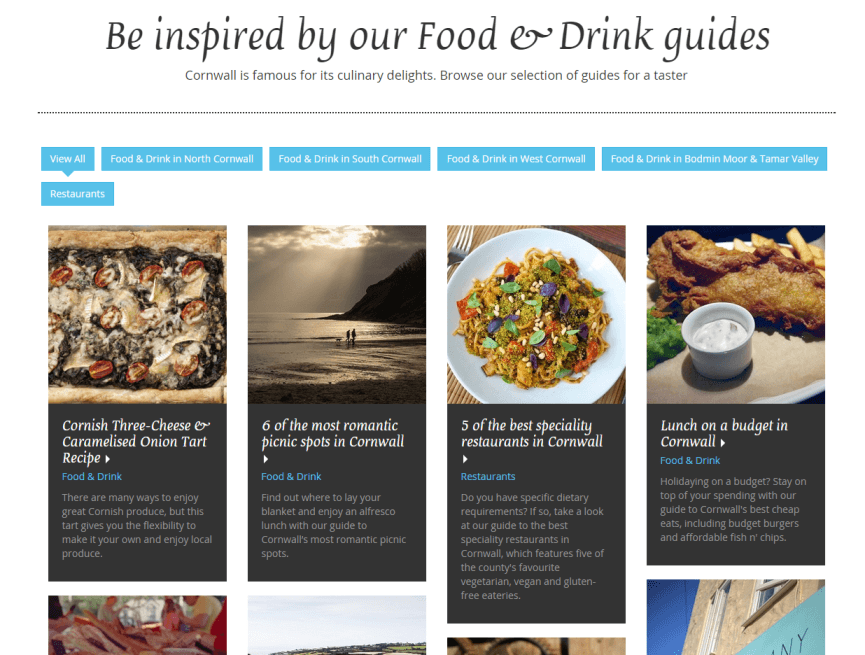Content Hubs: What Are They, How Do They Work and Why Does Your Website Need Them?
By Intern |25 Feb 2015
If you run your own website or you work in digital marketing, either client-side or for an agency, chances are you’ve heard, seen or read people talking about the importance of content hubs.
But what exactly is a content hub?
As part of Fresh Egg’s content team for over two years now, I’ve been involved in my fair share of content hub conversations – and, as you might expect, I’ve created the odd bit of content for them too.
Here, I explain what a content hub actually is, and why websites and brands choose to create them.
On the move? Listen to our content hubs podcast instead:
Fresh Egg's Content Hubs Podcast: What is a content hub and why do I need one> by Freshegg on Mixcloud
What is a content hub?
A content hub is a collection of pages published by a website, containing various content types, all of which focus on a particular topic that is intrinsically relevant to the site’s target audience.

Content hub example: H&M Life
The content is usually housed across numerous web pages and it is vital that it is made as easy as possible for users to navigate between the related pages – and between the content hub and the main site itself.
The best content hubs use a variety of different content formats to keep the user interested: fact sheets, how-to guides, FAQs, videos, widgets, embedded social feeds – the list goes on.
Ultimately, what a content hub enables you to do is attract users and potential customers by showing off your expertise in an area your target audience is interested in. Yes, you’ll want to make sure that relevant category and product pages are linked to – but your main aim shouldn’t be forcing sales onto your audience when they're not looking for them.
By providing them with truly useful information and guidance, you’re building trust in your brand among your audience, and hopefully putting yourself at the forefront of their minds when the time to purchase does come.
Click here to find out more about Fresh Egg's content marketing services.
What a content hub isn’t
So, that’s what a content hub is. Here’s what it is not.
A content hub is not:
- A landing page that links to existing related content, which offers the user no clear navigation back to the content hub homepage, or between other relevant content. Hub pages need to have a common navigation structure, and from each page within the hub there needs to be:
- Clear links to the other pages in the hub
- Clear links back to the main hub page
- Clear links to other relevant content
- An opportunity to publish overtly sales-orientated messaging or promotion. Content hubs are designed to provide information that is useful to and in demand from the target audience, around a topic that they are interested in (and one which is related to the product or service you offer in some way)
Fresh Egg content hub examples
Still not 100% sure what a content hub is? Check out these live examples Fresh Egg has created for two of our clients: Sykes Cottages and Nationwide Vehicle Contracts.
Sykes Cottages – Discover Cornwall

Key features:
- Content hub designed and built by Fresh Egg for UK holiday lettings company Sykes Cottages
- Designed to increase brand awareness of Sykes Cottages in Cornwall and the UK
- Improves the quality of Cornwall-related content on the Sykes Cottages website
- Positions Sykes Cottages as an authority and valued resource on holidaying in Cornwall
- Allows users to navigate through content by location, things to do or holiday types
- Initial content focus on food and drink, with a view to expand into other areas in the future
- Content management system (CMS) and reverse proxy setup allows new content to be added to the hub easily
- Content production is collaborative – Fresh Egg created the initial articles, videos and guides, and Sykes Cottages’ in-house team now also creates content
- Houses a variety of content types, including video and social feeds
Nationwide Vehicle Contracts – Useful Guide for Motorists

Key features:
- Content hubs designed and built by Fresh Egg for online UK leasing broker Nationwide Vehicle Contracts
- Collection of hubs to increase evergreen content on the site, increase brand awareness and offer motorists (and therefore potential leasing customers) relevant and useful information
- Addition of ‘Trust and compliance’ hub helps the site comply with FCA regulations
- Easy navigation between topics within the hubs, plus also from the homepage and main site navigation
- Houses a variety of content types, including a calculator widget, finance eligibility questionnaires and videos
But why build a content hub?
Why do so many brands choose to create content hubs, and why does Fresh Egg recommend them to our clients? Here are some of the main benefits:
Build authority and expertise, and encourage repeat visitors
Show potential customers you deserve their time (and ultimately, money) by displaying your knowledge in your chosen field. You’re showing that your brand knows what its customers want and you’re there to provide that information, whether that results in an immediate sale or not
Increase visibility
Having in-depth, quality content will naturally increase the number of queries your content is designed to answer. Thanks to the likes of Google's algorithm update Hummingbird, we know that search engines are more about understanding the meaning behind a search than they are about keywords. Building content hubs using a self-contained URL structure and linking them with your main site mimics the way in which search engines semantically understand the relationship between closely linked subjects
Boost engagement
By creating content you know will be useful to your users, and making sure it’s as easy as possible for them to find other pieces of relevant information, you’ll be keeping them engaged with your brand for longer
Creation of evergreen content
By its nature, much of the content housed within hubs is evergreen. Publishing this type of content that won’t go out of date the day after it’s published will offer your site long-term benefits and gradually building up the content’s authority over time, as more and more people engage with it
Control over your own content
It sounds simple, but by publishing your content within your own content hub, you keep control of how that content is displayed to your users. A flexible and user-friendly CMS helps here, making it easier to publish your guides, videos, quizzes, or whatever your heart desires, in the way you want them to be presented
Generate leads
Considering all of the above, it stands to reason that effective content hubs should help your website generate more leads. You might not see people jump straight from your content hub to the checkout – it’s all about the ‘long burn’ – but appropriate CTAs throughout the content are a must. The idea is that people will find the information you’re giving them helpful and trustworthy. They’re engaged with it enough for them to connect with your brand, and remember you when the time to purchase comes
So that’s the whats and whys covered – but how do you actually go about creating a content hub?
Find out in the second blog post in this series - How to Create an Effective Content Hub in 4 Steps.
Thinking about creating your own content hub? We can help. Contact us to find out how.